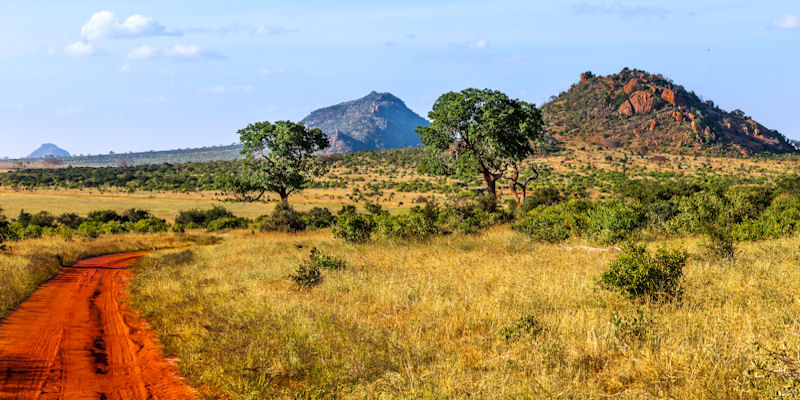Research project
What to plant, when and where? Designing integrated forest-agricultural landscapes to enhance multiple livelihood benefits to and from agriculture
- Start date: 1 April 2019
- End date: 31 March 2021
- Funder: BBSRC
- Value: £576,529
- Partners and collaborators: University of Newcastle Sokoine University of Agriculture, Tanzania National Museums of Kenya
- External primary investigator: Dr Marion Pfiefer (Newcastle University)
- Co-investigators: Dr Susannah M. Sallu
- External co-investigators: Dr Deo Shirima, Dr Esther Kioko, Dr Darren Evans, Dr Andrew Marshall (University of Sunshine Coast)

The overall aim of our project is to investigate biological and human well-being benefits provided by natural capital (sensu agroforestry) in tropical landscapes of Sub-Saharan Africa. Integrated land management that exploits natural capital (e.g. natural and semi-natural habitats and their resources) for benefits to and from agriculture has been identified as a key component of sustainable agricultural intensification in Sub-Saharan Africa by academics and practitioners.
Small-holder farmers traditionally recognise the benefits natural habitats can provide to agriculture. But research on underlying 'best practice' for improved crop yields is rare. Large knowledge gaps exist on the potential of natural capital for improving crop production whilst protecting biodiversity, clean water and resources such as timber, food, medicine and fuel. Data gaps are considerable on the biological mechanisms that underlie the benefits of natural capital for agriculture.
Both knowledge and data gaps create perception challenges ('how useful is natural capital and is it necessary?) and these in turn hinders the targeted uptake of integrated land management for agricultural intensification in small-holder and industrial farms. Our research will fill these gaps combining social and ecological method advances to quantify how and to what extent integrated landscape management can enhance benefits to and from agriculture.
Working with rural farmers, agribusiness, development and education practitioners, research organisations and government in Tanzania, we will collect and analyse ecological and socio-economic data from our study landscape in Tanzania to address four key objectives. Our study landscape (~ 20 km x 40 km) encompasses part of a corridor along the border between the fragile forests of the Udzungwa Mountains and the productive croplands of the Kilombero Valley, a water catchment area and an important ecological hotspot.
First, we will investigate the four key benefits provided by the study landscape: these include crop yields, soil health, biodiversity (in particular abundance of pollinators and natural enemies of pests and their interactions with food plants and habitats), and human-wellbeing. Second, we will investigate the spatial dependencies of these four benefits on natural and semi-natural habitats and their distribution in the landscape. Third, we will develop models that predict changes in these four benefits following restoration or loss of semi-natural and natural habitats in the study landscape.
These will allow us to design landscapes and management that would maximise the four benefits. And fourth, we will investigate the drivers for decision-making by farmers and agribusiness on the management of farms and the wider landscape. We will develop a tool that allows us to visualise those drivers and how they translate into decision-making and subsequently into agricultural productivity.
Impact
Our project's research focus is on impact aiming to maximise the utilisation of natural capital for food security and human-wellbeing. This builds on the definition of sustainable resource as 'use of resources at rates that do not exceed the capacity of the Earth to replace them'.
The research builds on evidence that agroforestry can substantially benefit crops, soil and biodiversity linked to pollination and pest control, whilst generating local (food, timber, firewood, medicine) and global (climate change mitigation, biodiversity conservation) environmental benefits. Our research will build on long-term partnerships established in the study landscape with farmers, agribusiness and government to achieve that impact.
Project website
https://blogs.ncl.ac.uk/marionpfeifer/projects/agrisys-tanzania/

